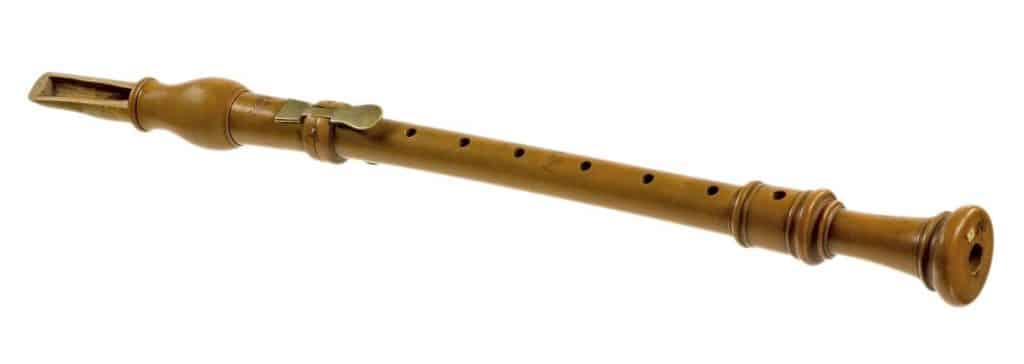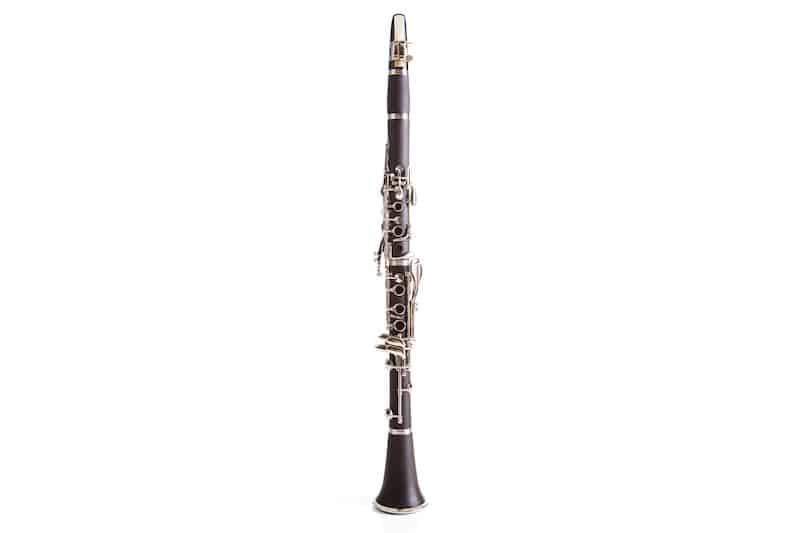The clarinet has been of the most popular instruments in the woodwind family throughout its musical history. Found in every symphony orchestra you’ll usually see four players with one also having a bass clarinet. But, relatively speaking, the clarinet is quite a young instrument having been invented at the end of the 1600s.
In this post, we’re going to take a brief look at the history of the clarinet including where it came from, who invented it and how it has evolved over the last few hundred years to be one of the most popular woodwind instruments.
Origins and Early Predecessors
While the modern version of the clarinet is one of the newer woodwind instruments, its roots go as far back as the earliest single-reed instruments.
These instrument’s origins date back to ancient Egypt with a single-reed instrument called the Memet.
Just about every single-reed instrument today descends from the Memet which has been around since circla 2400 BC.
The modern clarinet’s ancestry doesn’t run back as far as some of its instrumental brethren, like brass or percussion instruments.
But, the earliest ancestor of the clarinet’s sister instrument in the woodwind family, the flute, is said to be over 35,000 years old.

Versions of this were discovered in Germany made from the bones of a swan much like the one above.
It is assumed that the earliest version of early single reed instruments moved up through Egypt and the Middle East and were first brought to Europe through Turkey.
This is much like other cultural influences around the same time that made the same journey.
This development eventually led to the clarinet’s closest ancestor, the chalumeau which we’ll look at next.
Related: Read our list of facts about the clarinet here.
The Chalumeau

The Chalumeau is a single reed baroque instrument that led to the development of the modern-day clarinet.
As you can probably tell by the spelling, the chalumeau was first used in France, but the folk instrument made its way into Germany where it eventually lead to the development of the clarinet.
Regarding when it was invented, we know that it existed as far back as the 1630s because it appears in musical writings from that time although the exact date isn’t known.
Like the clarinet, the chalumeau was made with a long cylindrical body with a flared bell at the end.
It also comes in a family of instruments that are classified by size: soprano, alto, tenor, bass, and contrabass.
The problem with the chalumeau was its limited range of only 12 notes. This was why they had to have so many types to be able to cover different ranges.
The clarinet represented an effort to make improvements on the ergonomics and tone production of the chalumeau, like moving the thumb key towards the mouthpiece, lengthening the instrument, and opening the holes on the tube to improve the intonation and range.
The improvements provided clarinetists with a three-octave range which lead to chalumeau not being used as often with now only 10 original ones existing.
Johann Cristoph Denner and the First Clarinet
The invention of the modern clarinet is credited to a baroque-era instrument maker in Leipzig, Germany named Johann Cristoph Denner (1655–1707).
It’s not known exactly when he invented the clarinet, but it’s thought to be sometime between 1690 and 1700.
Interestingly, his brother, Jacob, is also credited by some as the inventor of the woodwind instrument as both worked in the family business as instrument makers.
This period in history was particularly fertile when it came to the improvement of musical instruments and Denner was no exception to that.
He was been credited with making at least 68 original wind instruments which are still in existence today.
The clarinets he produced were designed to be an improved version of the chalumeau and clearly, Denner did his job since the chalumeau is no longer used and the clarinet is one of the most widely played woodwind instruments in the world.
The first purchase of a clarinet was by the Nuremberg Town Band from Denner and it was an order for four soprano clarinets.
The most advanced design feature Denner added to the instrument was the speaker key (also known as a register key), which is a key that raised the tone of the clarinet by an octave when it was pushed down and greatly extended its range.
Further Development

New Keys
One of the first developments after Denner’s version was an alternation to the parts of the clarinet which came in 1740 with the addition of a third key.
This key, operated by the lower thumb, produces a low “E” which increased the range of the instrument even more than Denner had.
This helped strengthen and bridge the gap between the low register of the chalumeau and the higher register of the clarinet.
Another advantage of the third added key was the reduction of overblowing.
Other developments in the keys were that the Ab key was added to the keys controlled by the bottom hand and the C# key was added to be controlled by the pinky finger on the upper hand.
Pad Materials
Another important development that came about in the early 1800s was the invention of the modern pad.
Up until 1812 clarinets were made using felt pads to cover the tone holes. However, the issue was that these leaked air and would cause the clarinet to squeak or not play some notes if too many keys were played.
But Iwan Müller, another German clarinetist worked to fix this issue and started using leather or fish bladders to cover the pads. These materials were more airtight and thus allowed more keys to be played.
More Tone Holes
This same Iwan then went on to play around with the tone holes on the clarinet eventually designing one with 7 finger holes and 13 keys.
This gave the clarinet a lot more flexibility when it came to playing in different keys and allowed the musician to reach them easier along with much-improved intonation.
The Modern Clarinet

Nowadays there are lots of different types of clarinet in all different shapes and sizes.
The modern clarinet as we know it today, is based on Iwan Müller’s 1812 clarinet with a few additional developments.
The most recent sweeping change to the clarinet came in the 1950s with the SK mechanism after its creators, William Stubbins and Frank Kasper.
To help extend the range and make the upper altissimo range of the clarinet more clear, separate holes were created for a register key. The mechanism also altered the resonance of the Bb key.
Any development since the 1950s has been minor and sometimes only specific to a specific model of the clarinet.
Related: How many types of clarinets are there?
Use in Classical Music
It is a member of the woodwind family in every major orchestra along with the oboe, bassoon and flute.
Many classical artists also perform on the clarinet as solo artists around the world.
One clarinetist to know about is the German-born virtuoso, Sabine Meyer. She performs solo around the world and is a member of the Berlin Philharmonic.
Related: Check out our list of famous classical clarinetists here.
Use in Jazz
The clarinet is unique because of its versatility as both a classical and jazz instrument. It was actually the prominent wind instrument in the early days of jazz and big band music, not the saxophone.
This is thanks to the legendary performer and composer Benny Goodman.
While it’s not as prominent today in the jazz world, you will still see saxophone players doubling on it in Big Bands and the occasional jazz combo performance.
That’s it For The Clarinet’s History
That’s it for our take on the clarinet’s history, we hope you found it helpful. As you can see, the clarinet is one of the most important wind instruments in music history.
Its sweeping range and tonal versatility make it a fun tool for composers and arrangers to add as color or the featured instrument.
The clarinet is also a valuable instrument for young beginners because the skills developed when learning it can be transferred to most other woodwinds.
This is why so many great saxophonists started on the Bb clarinet.

